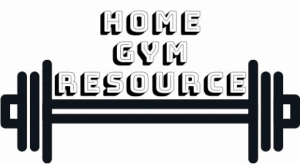Deciding to incorporate kettlebells into your fitness routine is a great choice, but the next question that often arises is, “How many kettlebells do you actually need?” The answer to this question depends on various factors, with the most crucial one being the weight of the kettlebells.
Starting with a single, properly chosen, kettlebell is perfectly viable. In total you’ll need about 4-5 kettlebells, each 2 kg /5 pounds heavier, to progress over time. However, if you plan to not only do compound exercises but also isolation movements you’ll need more.
Kettlebell workouts are unique in their approach, which means that lighter weights are often more appropriate than the heavy weights you might associate with traditional weightlifting. So, let’s explore how many kettlebells you need and which weights are right for you.
Contents
How Many Kettlebells Do You Need?
Compound vs. Isolation Movements
The type of exercise you want to do with your kettlebells has a big impact on how many you need. There are two main types of movements: Compound and Isolation.
If you want to use kettlebells for both compounds and isolation movements, you’ll need at least two kettlebells to start with.
Compound movements are exercises where more than one joint moves. Isolation exercises just move one joint at a time.
With compound movements, you can generally move more weight since you use more muscle mass at the same time. You’ll need a heavier kettlebell for this. Most kettlebell ‘native’ movements are compound exercises.
Isolation movements put all the stress on a single muscle which means you can move less weight and need a lighter kettlebell. You can do isolation exercises perfectly fine with kettlebells however, dumbbells are much better suited to those types of exercises.
Need some high-quality kettlebells that don’t break the bank? Click here to find the best options.
Minimalist Approach
If you’re looking for a minimalist approach, you can begin with just one kettlebell at the recommended starting weight. Kettlebells are versatile, and with one well-chosen weight, you can perform a wide range of exercises to achieve a full-body workout.
A weight that’s good for full-body workouts won’t be good for isolation movements like bicep curls or lateral raises, however.
By the way: If you’re not 100% sure if you should buy kettlebells or dumbbells, click here to find an in-depth article comparing the two.
Progression and Variety
Starting with a single kettlebell is perfectly fine and you can see significant results. The key to sustained progression is having a range of kettlebells of different weights.
Starting with a single kettlebell is perfectly viable and you can get a great workout done with just a single one.
However, the key to improving over time is to increase the difficulty of a workout. This can be done by doing more exercises, more sets, or increasing the duration of an exercise but the main way to progress over time is by using heavier weights.
To introduce progression and variety into your workouts, it’s a good idea to have a set of kettlebells in different weights. As you progress in your training, you can switch to heavier kettlebells for specific exercises or workouts.
Many people tend to increase their kettlebell weight gradually, typically in 2 kg./5 lbs. steps, as they get stronger.
When you progress, you’ll need a heavier kettlebell to progress. It’s easy to build that range over time though. Just start with a single one.
Just start with a single kettlebell and buy a heavier one when necessary. In the beginning, you’ll progress quite quickly but after a while, you’ll progress very slowly and you can use a single weight for a long time, sometimes years.
Most people need just 4-5 kettlebells over their whole training career. You need the starting weight and then 3-4 more kettlebells, each 2 kg/5 pounds heavier, to progress over time.
Which Weight Kettlebells Do You Need?
It’s possible to start with a single kettlebell as long as you pick the right weight. And that is a bit more complicated than choosing how many you need.
It depends on a few factors:
Gender & Training Level
Gender and current training level play a big role in kettlebell workouts. Kettlebell workouts are not about lifting super heavy weights for one-rep maxes or low-repetition sets. Instead, they often involve performing exercises for higher repetitions, focusing on endurance, explosiveness, and functional strength.
Everyone is different and has different capabilities but there are some general guidelines you can work from. Here is which weight kettlebells work for most people:
Of course, everyone is different and if you think 8 or 12 kg is too much to start with, it’s perfectly fine to drop the weight by 2 kg (5 pounds) to get started. I would recommend not going heavier when getting started.
Kettlebell Weight Tips
Choosing the Right Weights
Establishing a Baseline
To choose the right weights for your kettlebells, start by establishing a baseline weight. This is the weight you can comfortably handle for basic kettlebell exercises. You can use the starting weight guidelines mentioned earlier as a reference point.
If you’ve got access to a gym, the best way to figure out your correct starting weight is by just trying. It’s also worth investing in a training session with a trainer to get the basics right.
Gradual Progression
The key to effective kettlebell training is gradual progression. Don’t start with weights that are too heavy; instead, focus on mastering the basics with lighter weights first. As you become more proficient and your strength increases, you can gradually move up to heavier kettlebells.
Weight Increment Guidelines
Here are some weight increment guidelines based on experience levels and fitness goals:
However, it’s crucial to emphasize that these higher weights are not starting weights but rather goals to work toward over time.

